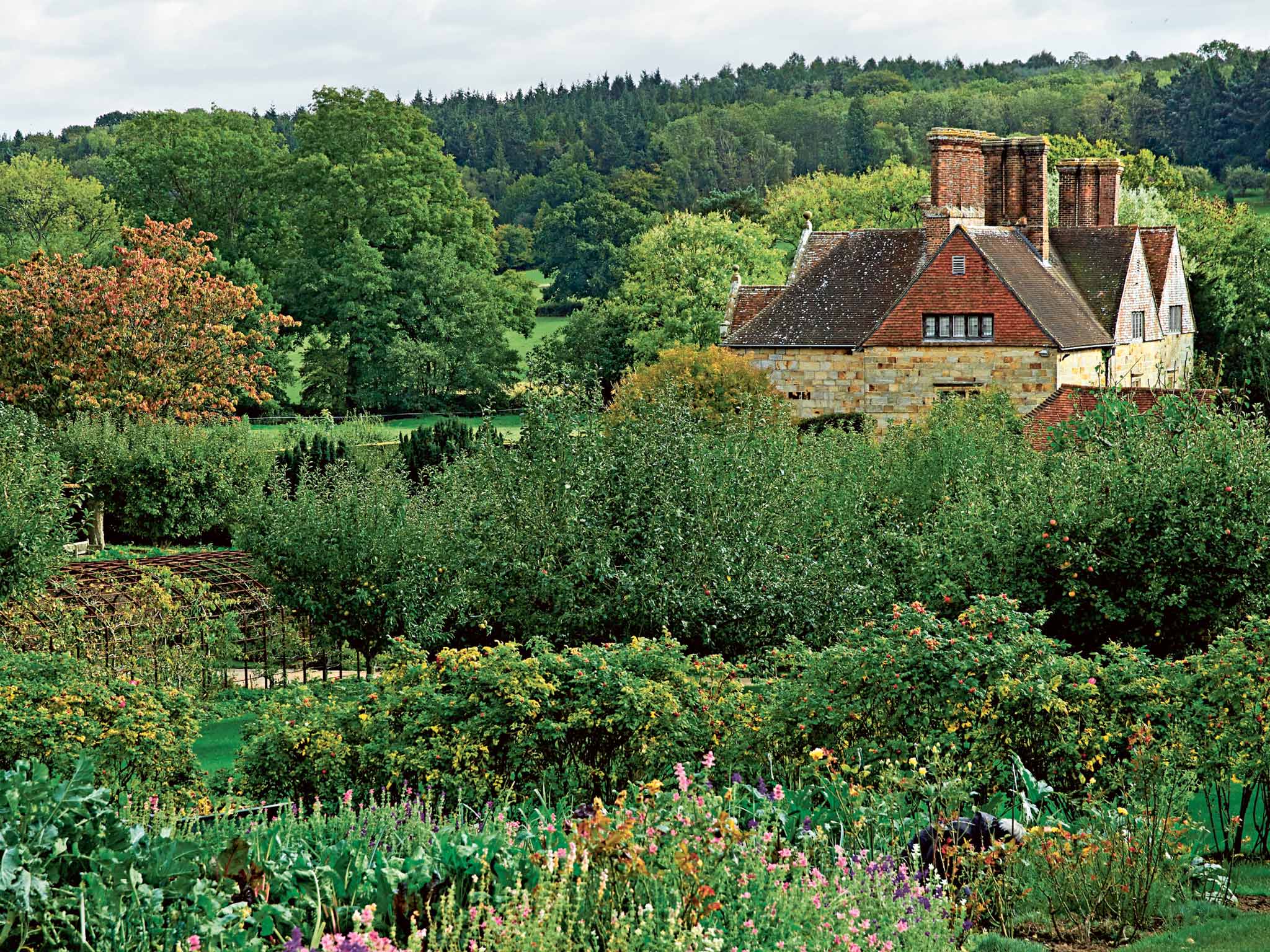Literary gardens: From Kipling's fruit trees to Dickens' geranium theatre
A new book reveals how Britain's favourite authors composed their gardens to their very idiosyncratic tastes

What is a garden for? This seems like a really simple question, until you try to answer it. Is it a view from the sink where you wash up and put cling film over leftovers, or is it a place to grow the actual dinner? Does it have to look good throughout the year, or is it only worth bothering from April to September? Is it just a parking spot for a giant trampoline?
For those of us who spend most of the day at home, the garden is even more problematic. You spend longer looking at it, for a start. Even tiny snagging jobs take on greater significance when you can't leave the premises at the crack of dawn and come back only after it's got dark. Then there are the big, ongoing questions about taking things out and chopping stuff back. There are probably sensible people in the world who concentrate on getting the view from a single window right and bugger the rest, but that's not me.
I spent an hour or two this weekend pondering all of these mysteries while turning the pages of Jackie Bennett's new book, The Writer's Garden: How Gardens Inspired our Best-loved Authors (£25, Frances Lincoln). You clearly don't need an amazing garden to write about one: Henry James's masterpiece The Portrait of a Lady begins with a cup of tea on an elegant, spreading country-house lawn – something that wasn't squished into his town garden at Lamb's House in Rye. And I doubt Rudyard Kipling spent much time pondering the bulb order for Batemans, in East Sussex, or that Virginia Woolf did tons of heavy digging at Monk's House, in the same county.
It's a book which I must admit left me mostly in admiration for the featured authors' ability to hire good staff.
Should we imagine these writers leaving their desks and heading outside with a sense of shock that the real world still exists, having been so much inside their own heads? Did any of them arrange their view from the desk window? Not Roald Dahl, who kept the curtains shut while he worked, and insulated the walls with polystyrene.
But, Bennett explains, Dahl was a keen gardener, consulting the celebrated plantswoman and colourful character Valerie Finnis for plant advice (she has one of the nicest grape hyacinths, Muscari "Valerie Finnis", named after her). Finnis, who'd lost her 22-year-old son in the Second World War, helped Dahl choose plants for a tiny rock garden he made next to the grave of his daughter Olivia, who died aged seven of the measles. Dahl went on to become a passionate orchid-hunter, making expeditions into the rainforest in Hawaii in search of good new plants.
Clearly, for Dahl, gardening's meditative properties acted as a salve on a wounded life.
For Dickens, whose house also features in Bennett's book, things got horticulturally much more theatrical. Accounts record his construction of a "Geranium Theatre": staging that showed off prize specimens in blasts of colour, in front of the ground-floor bay windows. Dickens was also waylaid by the Victorian craze for ferns, and spent some of his US lecture tour earnings on a conservatory to suit them.
Elsewhere, one of Britain's oddest Nobel Prize for Literature winners, Winston Churchill, made a garden at Chartwell, Kent, where he worked off energy during dark moments in dam-building and brick-laying. Bennett explains that he was actually a member of the Union of Building Trade Workers, and could lay 90 bricks an hour. And I may have earlier been unfair to Kipling, another Nobel winner, who spent his Stockholm winnings on major garden improvements at Batemans, creating terraces and planting fruit trees (though no details are given on the bulb order).
It turns out that writers are as different in the ways they use their gardens as the rest of us: letting them soak up unexpected windfalls, using flower beds to show off, or creating peaceful places to think. But bizarrely, the one thing no writer in the book ever decided they needed was a giant trampoline.
Subscribe to Independent Premium to bookmark this article
Want to bookmark your favourite articles and stories to read or reference later? Start your Independent Premium subscription today.

Join our commenting forum
Join thought-provoking conversations, follow other Independent readers and see their replies